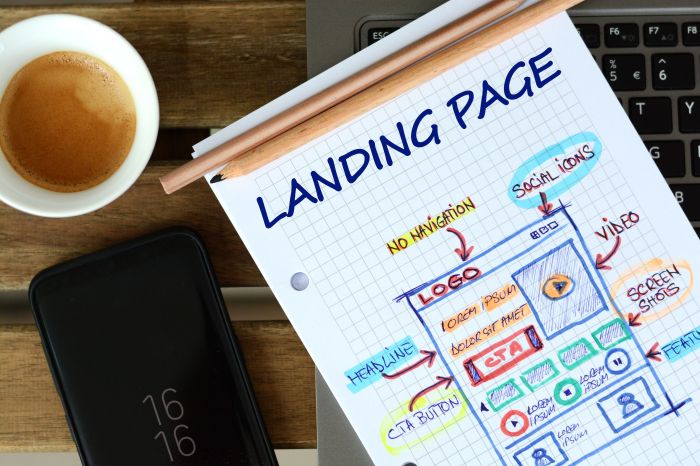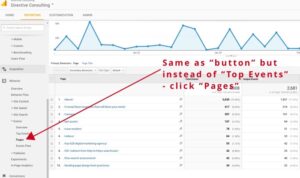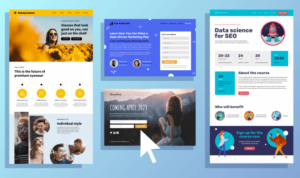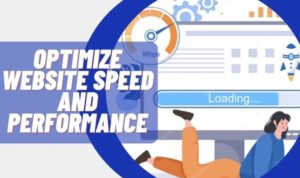Building a Landing Page kicks off the discussion on creating a captivating online experience that drives conversions and engages users. From design elements to mobile responsiveness, this guide covers it all in a hip and engaging style.
Get ready to dive into the world of landing pages and learn how to make a lasting impression on your audience.
Importance of Landing Pages
Landing pages are the unsung heroes of online marketing campaigns. They serve as the first point of contact between a potential customer and a business, making them crucial in capturing leads and driving conversions. A well-designed landing page can make or break a marketing campaign, as it directly impacts the user’s decision to take action.
How Landing Pages Improve Conversion Rates
Landing pages are tailored to a specific audience and offer a clear call to action, creating a seamless user experience that guides visitors towards making a purchase or signing up for a service. By eliminating distractions and focusing on a single goal, landing pages increase the likelihood of conversion. Additionally, tracking and analyzing data from landing pages provide valuable insights for optimizing marketing strategies and improving overall performance.
- Landing pages increase conversion rates by providing a targeted message that resonates with the audience.
- They help in building credibility and trust with visitors, leading to higher chances of conversion.
- By testing different elements on landing pages, businesses can optimize for better results and maximize ROI.
Successful landing pages are like a magnet, attracting and converting leads into loyal customers.
Examples of Successful Landing Pages and Their Impact
- The landing page for Airbnb’s referral program incentivizes users to invite friends by offering travel credits, resulting in a viral growth of their user base.
- Pipedrive’s landing page focuses on highlighting the benefits of their CRM software, leading to a significant increase in sign-ups and conversions.
- HubSpot’s ebook landing pages are designed to capture leads by offering valuable content in exchange for contact information, contributing to their lead generation efforts.
Design Elements: Building A Landing Page

When creating an effective landing page, it is crucial to pay attention to the design elements that can make or break user engagement. From color schemes to typography, every detail plays a significant role in capturing the attention of visitors and driving them towards the desired action.
Clear Call-to-Action (CTA)
A clear call-to-action is the heart of any successful landing page. It should be prominently displayed, using persuasive language that compels visitors to take action. Whether it’s signing up for a newsletter, downloading a free resource, or making a purchase, the CTA should stand out and guide users towards the next steps.
Color Schemes and Typography
The color scheme and typography choices on a landing page can greatly influence user engagement. Colors evoke emotions and can help convey the brand’s message effectively. Similarly, typography sets the tone for the content and enhances readability. By choosing the right colors and fonts that align with the brand identity and target audience, you can create a visually appealing and engaging landing page that drives conversions.
Content Creation
Creating compelling content on a landing page is crucial for engaging visitors and converting them into customers. Your content should be clear, concise, and relevant to your target audience. Here are some tips for creating effective content:
Significance of Persuasive Copywriting Techniques
Using persuasive copywriting techniques can help you capture the attention of your audience and compel them to take action. By incorporating persuasive language, emotional triggers, and compelling calls to action, you can increase the chances of visitors converting into leads or customers.
Balancing Text, Images, and Multimedia Content
When designing your landing page, it’s important to strike a balance between text, images, and multimedia content. Too much text can overwhelm visitors, while too many images or videos can slow down your page load time. Aim to provide a mix of engaging copy, high-quality images, and relevant videos to create a visually appealing and informative experience for your visitors.
Mobile Responsiveness
In today’s digital age, mobile responsiveness is crucial for landing pages. With more and more users accessing websites on their smartphones and tablets, it is essential to ensure that your landing page is optimized for mobile devices.
Best Practices for Optimizing Landing Pages for Mobile Devices
When optimizing landing pages for mobile devices, there are several best practices to keep in mind:
– Ensure fast loading times by optimizing images and reducing unnecessary elements.
– Use a responsive design that adapts to different screen sizes and orientations.
– Keep the content concise and easy to read on a smaller screen.
– Use large, tappable buttons and clear call-to-action to improve user interaction.
– Test your landing page on various mobile devices to ensure compatibility and responsiveness.
Impact of Mobile-Friendly Design on User Experience, Building a Landing Page
A mobile-friendly design can significantly impact user experience in a positive way:
– Improved user engagement and lower bounce rates due to a seamless browsing experience.
– Higher conversion rates as users are more likely to take action on a mobile-friendly landing page.
– Enhanced credibility and trust from users who value a well-designed and functional mobile experience.
– Better performance as search engines prioritize mobile-friendly websites in search results.
A/B Testing

A/B testing is a crucial aspect of optimizing landing page performance. By testing different variations of elements on a landing page, marketers can determine which design, copy, or layout resonates best with their target audience. This data-driven approach allows for continuous improvement and better conversion rates.
Setting up A/B Tests
To set up A/B tests for different elements on a landing page, follow these steps:
- Create two versions of the element you want to test, such as a headline, call-to-action button, or form.
- Randomly divide your website traffic into two equal segments, with one segment seeing version A and the other seeing version B.
- Monitor and analyze the performance of each version based on predefined metrics.
- Implement the winning version that generates higher conversions or engagement.
Common Metrics for A/B Testing
During A/B testing for landing pages, consider measuring the following metrics:
- Conversion Rate: The percentage of visitors who complete a desired action on the landing page.
- Bounce Rate: The percentage of visitors who navigate away from the landing page without interacting further.
- Click-Through Rate (CTR): The percentage of visitors who click on a specific element, such as a button or link.
- Time on Page: The average amount of time visitors spend on the landing page before exiting.











